 Search by Keyword
|
“I CALL YOUR NAME”
(John Lennon - Paul McCartney)
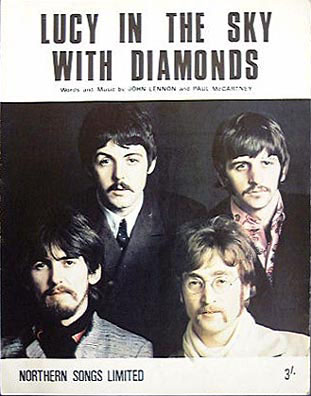 Arguably, there is no other musical artist that has attracted as much speculation as The Beatles and their music. Die-hard fans of the group just seem to need to know what the lyrics of their songs mean. Many fans, as well as critics and authors, hold on tightly to their interpretations even when all available evidence points elsewhere. For instance; what actually is “Norwegian Wood,” were the initials in the title “Lucy in the Sky with Diamonds” meant to intentionally spell out “LSD,” and did The Beatles actually insert hidden clues in their music to give listeners the impression that Paul McCartney was dead? Arguably, there is no other musical artist that has attracted as much speculation as The Beatles and their music. Die-hard fans of the group just seem to need to know what the lyrics of their songs mean. Many fans, as well as critics and authors, hold on tightly to their interpretations even when all available evidence points elsewhere. For instance; what actually is “Norwegian Wood,” were the initials in the title “Lucy in the Sky with Diamonds” meant to intentionally spell out “LSD,” and did The Beatles actually insert hidden clues in their music to give listeners the impression that Paul McCartney was dead?
 Of lesser significance, nonetheless still interesting, is the true intention of the lyrics of “I Call Your Name.” It may appear to have an obvious meaning on the surface, but does it have a deeper meaning? Even the song’s co-author can do nothing but speculate. “When I look back at some of these lyrics,” Paul stated in his book "Many Years From Now," "I think: Wait a minute. What did he mean? ‘I call your name but you’re not there.’ Is it his mother? His father? I must admit I didn’t really see that as we wrote it because we were just a couple of young guys writing. You didn’t look behind it at the time, it was only later you started analyzing things." Of lesser significance, nonetheless still interesting, is the true intention of the lyrics of “I Call Your Name.” It may appear to have an obvious meaning on the surface, but does it have a deeper meaning? Even the song’s co-author can do nothing but speculate. “When I look back at some of these lyrics,” Paul stated in his book "Many Years From Now," "I think: Wait a minute. What did he mean? ‘I call your name but you’re not there.’ Is it his mother? His father? I must admit I didn’t really see that as we wrote it because we were just a couple of young guys writing. You didn’t look behind it at the time, it was only later you started analyzing things."
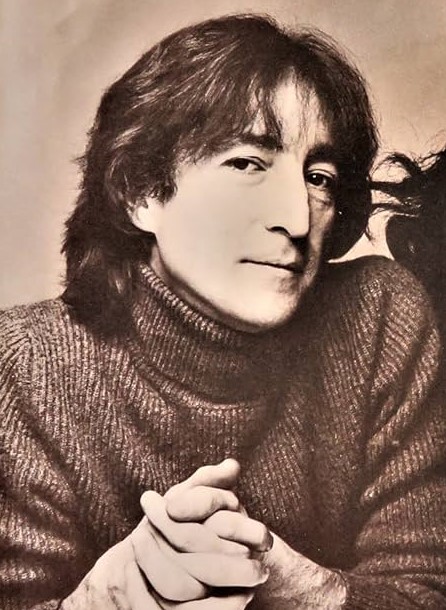 Because of John Lennon’s passing on December 8th, 1980, the speculation can only continue regarding the true meaning of this and many others of his songs. As we analyze these lyrics, we may be able to get a glimpse of his intentions regarding this song. We may individually reach a conclusion, but we all have to humbly admit that we probably will never really know for sure. Because of John Lennon’s passing on December 8th, 1980, the speculation can only continue regarding the true meaning of this and many others of his songs. As we analyze these lyrics, we may be able to get a glimpse of his intentions regarding this song. We may individually reach a conclusion, but we all have to humbly admit that we probably will never really know for sure.
Songwriting History
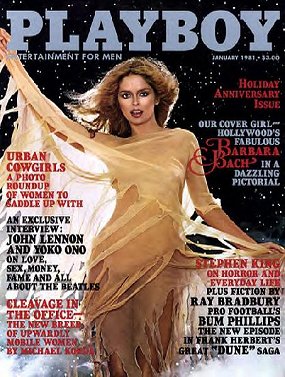 “That was my song,” said John in his 1980 Playboy interview, “when there was no Beatles and no group. I just had it around. It was my effort as a kind of blues originally, and then I wrote the middle eight just to stick it in the album when it came out years later. The first part had been written before Hamburg even. It was one of my first attempts at a song.” “That was my song,” said John in his 1980 Playboy interview, “when there was no Beatles and no group. I just had it around. It was my effort as a kind of blues originally, and then I wrote the middle eight just to stick it in the album when it came out years later. The first part had been written before Hamburg even. It was one of my first attempts at a song.”
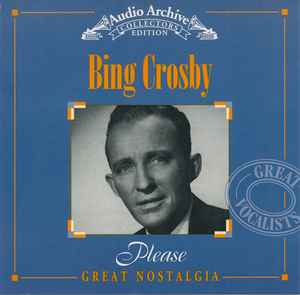 Since John has stated in interviews that he began writing songs “when I got my first guitar,” and this was one of his first attempts at songwriting, the main portions of the song could easily date back as far as March 1957 when John received his first guitar. Since his first group, The Quarrymen, was formed shortly after he got his guitar, the song most likely was written within the time period of March and April of 1957. The style of the song fits in with this time frame, as it harkens back to pre-rock and roll days, more reminiscent of Bing Crosby than Chuck Berry. Since John has stated in interviews that he began writing songs “when I got my first guitar,” and this was one of his first attempts at songwriting, the main portions of the song could easily date back as far as March 1957 when John received his first guitar. Since his first group, The Quarrymen, was formed shortly after he got his guitar, the song most likely was written within the time period of March and April of 1957. The style of the song fits in with this time frame, as it harkens back to pre-rock and roll days, more reminiscent of Bing Crosby than Chuck Berry.
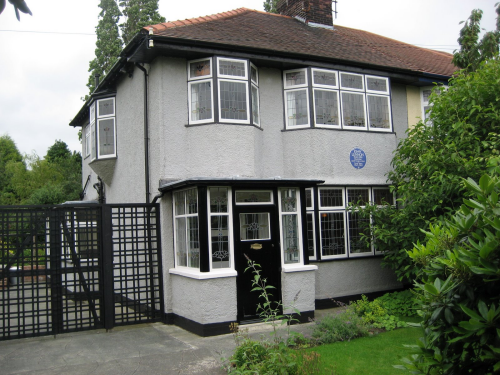 One thing that John failed to mention was that Paul did help him with the song during a writing session at John’s home with his Aunt Mimi on Menlove Avenue shortly after he joined The Quarrymen. “Physically it was always a bad idea for us to sit side by side on the bed in his bedroom,” McCartney recalls. “The necks of our guitars were always banging.” Nonetheless, he claims co-authorship of "I Call Your Name" by explaining: “We worked on it together, but it was John’s idea.” One thing that John failed to mention was that Paul did help him with the song during a writing session at John’s home with his Aunt Mimi on Menlove Avenue shortly after he joined The Quarrymen. “Physically it was always a bad idea for us to sit side by side on the bed in his bedroom,” McCartney recalls. “The necks of our guitars were always banging.” Nonetheless, he claims co-authorship of "I Call Your Name" by explaining: “We worked on it together, but it was John’s idea.”
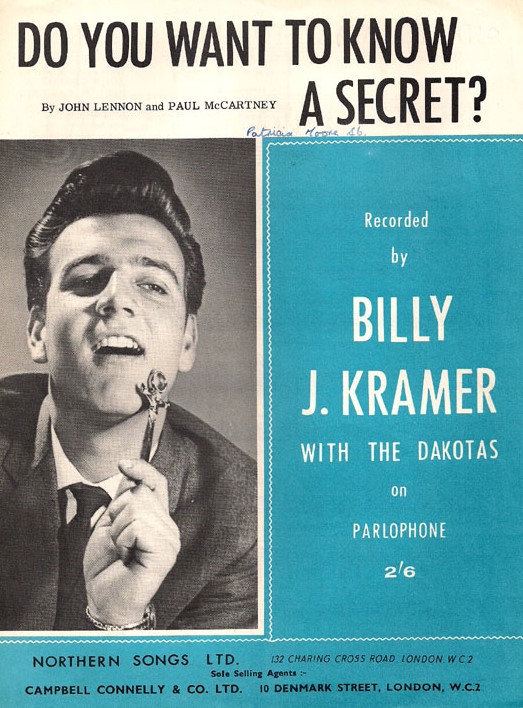 After Lennon had it “around” for six years, he pulled it from his memory banks in May of 1963 to construct the “middle eight,” or bridge section, and offered it to the new Brian Epstein protégé Billy J. Kramer. Brian Epstein had been encouraging the burgeoning Lennon / McCartney songwriting team to offer original songs to other recording artists to perform in order for the composers to earn additional royalty payments. They were happy to acquiesce, but only with what they felt was substandard material. They had already offered “Do You Want To Know A Secret” and “I’ll Be On My Way” to Billy J. Kramer, and when more were requested, John and Paul dusted off “Bad To Me” and “I Call Your Name.” After Lennon had it “around” for six years, he pulled it from his memory banks in May of 1963 to construct the “middle eight,” or bridge section, and offered it to the new Brian Epstein protégé Billy J. Kramer. Brian Epstein had been encouraging the burgeoning Lennon / McCartney songwriting team to offer original songs to other recording artists to perform in order for the composers to earn additional royalty payments. They were happy to acquiesce, but only with what they felt was substandard material. They had already offered “Do You Want To Know A Secret” and “I’ll Be On My Way” to Billy J. Kramer, and when more were requested, John and Paul dusted off “Bad To Me” and “I Call Your Name.”
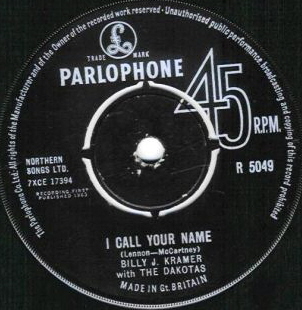 We do know that the song was completely written as of June 1963 since John had recorded a demo of the composition to give to Billy J. Kramer that month. Billy J. Kramer and his group The Dakotas recorded the song on June 27th, 1963 and released the song as the b-side to “Bad To Me,” which reached #1 in Britain. Since the song languished on the b-side of Billy J. Kramer’s single, Lennon decided to reclaim the song as a Beatles track in March of 1964. We do know that the song was completely written as of June 1963 since John had recorded a demo of the composition to give to Billy J. Kramer that month. Billy J. Kramer and his group The Dakotas recorded the song on June 27th, 1963 and released the song as the b-side to “Bad To Me,” which reached #1 in Britain. Since the song languished on the b-side of Billy J. Kramer’s single, Lennon decided to reclaim the song as a Beatles track in March of 1964.
Recording History
 Many may have questions regarding the recording history of “I Call Your Name” because of the subtle differences between the mono and stereo mixes that they are used to listening to. These differences aren’t so much a product of the recording as they are of the editing done when the various mixes were made of the song. The actual recording was very simple and quite the usual process for The Beatles and everyone else involved. Many may have questions regarding the recording history of “I Call Your Name” because of the subtle differences between the mono and stereo mixes that they are used to listening to. These differences aren’t so much a product of the recording as they are of the editing done when the various mixes were made of the song. The actual recording was very simple and quite the usual process for The Beatles and everyone else involved.
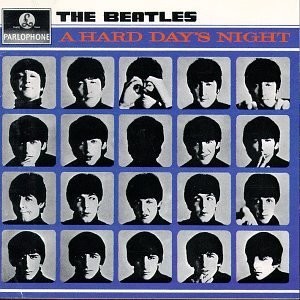 March 1st, 1964, was the final session date used for recording the first batch of songs for their upcoming first film, eventually titled “A Hard Day’s Night.” Three selections were recorded in EMI Studio Two during this three hour morning / afternoon session, which ran from 10 am to 1:30 pm. After completely finishing “I’m Happy Just To Dance With You” and “Long Tall Sally,” they started work on “I Call Your Name,” which would make it approximately noon. March 1st, 1964, was the final session date used for recording the first batch of songs for their upcoming first film, eventually titled “A Hard Day’s Night.” Three selections were recorded in EMI Studio Two during this three hour morning / afternoon session, which ran from 10 am to 1:30 pm. After completely finishing “I’m Happy Just To Dance With You” and “Long Tall Sally,” they started work on “I Call Your Name,” which would make it approximately noon.
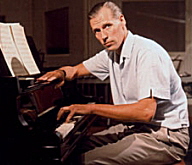 Before the first take of the song, Lennon asked George Martin, who was in the control room, “Do you think it’s a bit much doing Billy J.’s intro and solo? Cos it’s our song anyroad, innit?” When you examine Billy J. Kramer’s version of the song, you can easily see that The Beatles did decide to use the introduction and solo section as previously recorded for his version. Before the first take of the song, Lennon asked George Martin, who was in the control room, “Do you think it’s a bit much doing Billy J.’s intro and solo? Cos it’s our song anyroad, innit?” When you examine Billy J. Kramer’s version of the song, you can easily see that The Beatles did decide to use the introduction and solo section as previously recorded for his version.
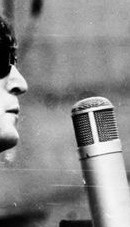 The group did seven takes live with all four Beatles playing the usual instruments, however only three of those seven takes were complete. "Take seven" was determined to be the best, onto which two overdubs were then performed, one for double tracking John’s vocals and the other for Ringo to play a cowbell throughout the entire song. This wrapped up the session at 1:30 pm, in preparation for the first day of shooting “A Hard Day’s Night” the next day. The group did seven takes live with all four Beatles playing the usual instruments, however only three of those seven takes were complete. "Take seven" was determined to be the best, onto which two overdubs were then performed, one for double tracking John’s vocals and the other for Ringo to play a cowbell throughout the entire song. This wrapped up the session at 1:30 pm, in preparation for the first day of shooting “A Hard Day’s Night” the next day.
 Now the mixing process begins. Two days later, on March 3rd, 1964, George Martin and his engineers Norman Smith and A.B. Lincoln convened in the control room of EMI Studio One to prepare mono mixes for six of the recently recorded songs. These mono mixes were made in a hurry because of United Artists’ urgent request for the songs to be used in the film. Since “I Call Your Name” was one of the songs mixed on this day, it can easily be assumed that they intended the song to be in the movie at this point in time. Since the title track to the movie wasn’t yet written or recorded, “I Call Your Name” obviously got replaced in the soundtrack when the song “A Hard Day’s Night” eventually materialized. Also, it has been said that the film's director Richard Lester rejected "I Call Your Name" for inclusion in the movie because it too closely resembled "You Can't Do That," which was slated for inclusion in the film at that time. Either way, as it turned out, the mix for “I Call Your Name” made on this day was ultimately scrapped. Now the mixing process begins. Two days later, on March 3rd, 1964, George Martin and his engineers Norman Smith and A.B. Lincoln convened in the control room of EMI Studio One to prepare mono mixes for six of the recently recorded songs. These mono mixes were made in a hurry because of United Artists’ urgent request for the songs to be used in the film. Since “I Call Your Name” was one of the songs mixed on this day, it can easily be assumed that they intended the song to be in the movie at this point in time. Since the title track to the movie wasn’t yet written or recorded, “I Call Your Name” obviously got replaced in the soundtrack when the song “A Hard Day’s Night” eventually materialized. Also, it has been said that the film's director Richard Lester rejected "I Call Your Name" for inclusion in the movie because it too closely resembled "You Can't Do That," which was slated for inclusion in the film at that time. Either way, as it turned out, the mix for “I Call Your Name” made on this day was ultimately scrapped.
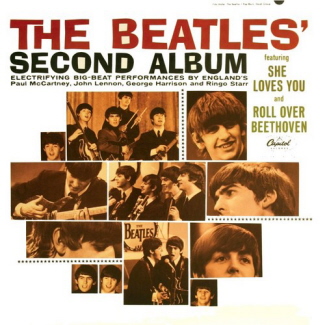 The next day, March 4th, 1964, saw the first mono mix of the song that did get released. George Martin entered the control room of EMI Studio Three between 10 and 11 am with an unnamed engineer to then create another mono mix. This is the mono mix that was sent to the US for inclusion on the rush-released “The Beatles’ Second Album.” It was decided while creating this mix that the solo section had been performed better on a previous take, so this portion of the song was edited into "take seven" just after the double-tracked lyric “I call your name” in the third verse, evidenced by the disappearing of the cowbell at that point. After the solo is complete, "take seven" reappears with the lyric “don’t you know I can’t take it,” which brings back the cowbell for the rest of the song. The next day, March 4th, 1964, saw the first mono mix of the song that did get released. George Martin entered the control room of EMI Studio Three between 10 and 11 am with an unnamed engineer to then create another mono mix. This is the mono mix that was sent to the US for inclusion on the rush-released “The Beatles’ Second Album.” It was decided while creating this mix that the solo section had been performed better on a previous take, so this portion of the song was edited into "take seven" just after the double-tracked lyric “I call your name” in the third verse, evidenced by the disappearing of the cowbell at that point. After the solo is complete, "take seven" reappears with the lyric “don’t you know I can’t take it,” which brings back the cowbell for the rest of the song.
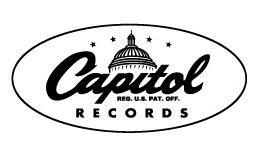 On March 10th, 1964, George Martin and Norman Smith convened in EMI Studio Two to make seven mixes, four of them stereo, for recently recorded Beatles songs. “I Call Your Name” received its first stereo mix on this day, which was also rushed off to Capitol Records in the US for inclusion on "The Beatles’ Second Album." Capitol proceeded to add some reverb to this stereo mix to add a bit of depth to the sound. On March 10th, 1964, George Martin and Norman Smith convened in EMI Studio Two to make seven mixes, four of them stereo, for recently recorded Beatles songs. “I Call Your Name” received its first stereo mix on this day, which was also rushed off to Capitol Records in the US for inclusion on "The Beatles’ Second Album." Capitol proceeded to add some reverb to this stereo mix to add a bit of depth to the sound.
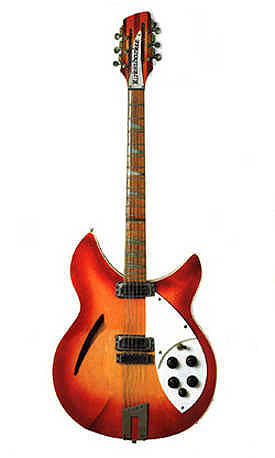 There are some noteworthy differences in this first stereo mix. First of all, a decision was made to use a different introduction to the song from an earlier take, however this take did not have either the cowbell or double-tracked vocal overdubs applied to it since the take was not deemed good enough at the time of recording. As it is, the beginning guitar introduction by George Harrison is noticeably different from what is heard in the earlier mono mix taken directly from "take seven." Just as John starts singing “I call your name” in this stereo mix, the cowbell appears for the first time. The solo section is also edited into the mix like it was for the previous mono mix, but the edit comes just before John sings “I call your name” at the end of the third verse, leaving it without the cowbell during those words. It’s also noteworthy to mention that the vocals and the cowbell appear in the right channel of this first stereo mix. Since both of these mixes were released in the US on the mono and stereo versions of “The Beatles’ Second Album,” America became familiar with these unique versions of the song. There are some noteworthy differences in this first stereo mix. First of all, a decision was made to use a different introduction to the song from an earlier take, however this take did not have either the cowbell or double-tracked vocal overdubs applied to it since the take was not deemed good enough at the time of recording. As it is, the beginning guitar introduction by George Harrison is noticeably different from what is heard in the earlier mono mix taken directly from "take seven." Just as John starts singing “I call your name” in this stereo mix, the cowbell appears for the first time. The solo section is also edited into the mix like it was for the previous mono mix, but the edit comes just before John sings “I call your name” at the end of the third verse, leaving it without the cowbell during those words. It’s also noteworthy to mention that the vocals and the cowbell appear in the right channel of this first stereo mix. Since both of these mixes were released in the US on the mono and stereo versions of “The Beatles’ Second Album,” America became familiar with these unique versions of the song.
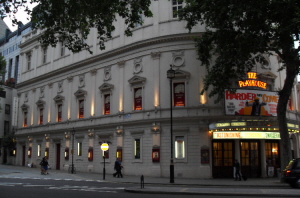 "I Call Your Name" was recorded once again by The Beatles on March 31st, 1964 at Playhouse Theatre in London between 7 and 10:30 pm for the BBC radio show “Saturday Club,” which was produced by Jimmy Grant and Bernie Andrews and broadcast on April 4th of that year between 10 am and 12 noon. "I Call Your Name" was recorded once again by The Beatles on March 31st, 1964 at Playhouse Theatre in London between 7 and 10:30 pm for the BBC radio show “Saturday Club,” which was produced by Jimmy Grant and Bernie Andrews and broadcast on April 4th of that year between 10 am and 12 noon.
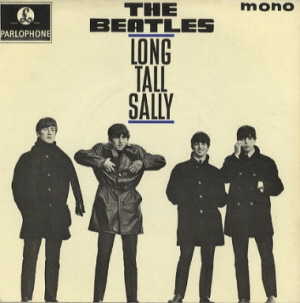 June 4th, 1964, saw another mono mix of the official EMI recording of the song, which was ultimately the one used in Britain for the “Long Tall Sally” EP, released on June 19th, 1964. George Martin, Norman Smith and 2nd engineer Richard Langham entered EMI Studio Two on this day with, once yet again, editing this song in mind. Like the mono mix sent to America, they kept strictly to "take seven" for the introduction which has the cowbell appear right from the beginning of the song. When editing in the solo section from that previous take, the edit appeared just before the words “I call your name” in the third verse, at which point the cowbell disappears. It then reappears when the solo is over just as the words “don’t you know I can’t take it” are sung. June 4th, 1964, saw another mono mix of the official EMI recording of the song, which was ultimately the one used in Britain for the “Long Tall Sally” EP, released on June 19th, 1964. George Martin, Norman Smith and 2nd engineer Richard Langham entered EMI Studio Two on this day with, once yet again, editing this song in mind. Like the mono mix sent to America, they kept strictly to "take seven" for the introduction which has the cowbell appear right from the beginning of the song. When editing in the solo section from that previous take, the edit appeared just before the words “I call your name” in the third verse, at which point the cowbell disappears. It then reappears when the solo is over just as the words “don’t you know I can’t take it” are sung.
 June 22nd, 1964, three days after the British EP was released, another stereo mix of "I Call Your Name" was created during a marathon mixing session for the upcoming “A Hard Day’s Night” album. This session, attended only by George Martin, Norman Smith and engineer Geoff Emerick, took place in the control room of EMI Studio One. The existence of this latest mix indicates that the "powers that be" were still considering including the song on this album, although obviously this idea was dropped shortly thereafter. June 22nd, 1964, three days after the British EP was released, another stereo mix of "I Call Your Name" was created during a marathon mixing session for the upcoming “A Hard Day’s Night” album. This session, attended only by George Martin, Norman Smith and engineer Geoff Emerick, took place in the control room of EMI Studio One. The existence of this latest mix indicates that the "powers that be" were still considering including the song on this album, although obviously this idea was dropped shortly thereafter.
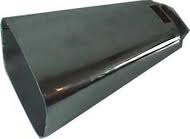 Just like what is heard in the earlier stereo mix, the EMI staff incorporated the introduction from that earlier take without the overdubs, thereby omitting the cowbell. However, this time they were a little late in returning back to the finished "take seven" with the added overdubs, so the first line, “I call you name,” is from that earlier take and is, therefore, single-tracked and without the cowbell. They then decided to edit back to "take seven" at the beginning of the second measure, which brings in the cowbell for the first time in the song just before the words “but you’re not there,” these vocals being double-tracked. The solo section is still edited in from the earlier take of the song, but it comes in just after the words “I call your name” at the end of the third verse, which therefore has the cowbell playing through those words. Unlike the previous stereo mix that has the vocals and cowbell in the right channel only, these elements are now centered in this newer stereo mix with the cowbell slightly louder. Just like what is heard in the earlier stereo mix, the EMI staff incorporated the introduction from that earlier take without the overdubs, thereby omitting the cowbell. However, this time they were a little late in returning back to the finished "take seven" with the added overdubs, so the first line, “I call you name,” is from that earlier take and is, therefore, single-tracked and without the cowbell. They then decided to edit back to "take seven" at the beginning of the second measure, which brings in the cowbell for the first time in the song just before the words “but you’re not there,” these vocals being double-tracked. The solo section is still edited in from the earlier take of the song, but it comes in just after the words “I call your name” at the end of the third verse, which therefore has the cowbell playing through those words. Unlike the previous stereo mix that has the vocals and cowbell in the right channel only, these elements are now centered in this newer stereo mix with the cowbell slightly louder.
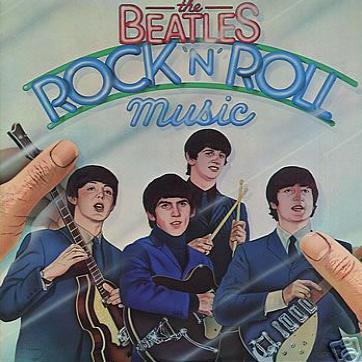 This hurriedly done stereo mix did not get released until the 1976 “Rock ‘n’ Roll Music” compilation, this mix appearing in both the US and UK versions of the album. George Martin was asked by current Capitol Records president Bhaskar Menon to be involved in preparing this album for release. In a 1976 Rolling Stone magazine article, George Martin stated, "I did what I thought was necessary to make it a bit more palatable for today's market without destroying the intent of the original." In the case of this never before released stereo mix of "I Call Your Name," George Martin decided to reverse the left and right channels and not add any reverb as US audiences were used to hearing on "The Beatles' Second Album." This hurriedly done stereo mix did not get released until the 1976 “Rock ‘n’ Roll Music” compilation, this mix appearing in both the US and UK versions of the album. George Martin was asked by current Capitol Records president Bhaskar Menon to be involved in preparing this album for release. In a 1976 Rolling Stone magazine article, George Martin stated, "I did what I thought was necessary to make it a bit more palatable for today's market without destroying the intent of the original." In the case of this never before released stereo mix of "I Call Your Name," George Martin decided to reverse the left and right channels and not add any reverb as US audiences were used to hearing on "The Beatles' Second Album."
After all was said and done, there were four unique mixes of “I Call Your Name” made in 1964.
Song Structure and Style
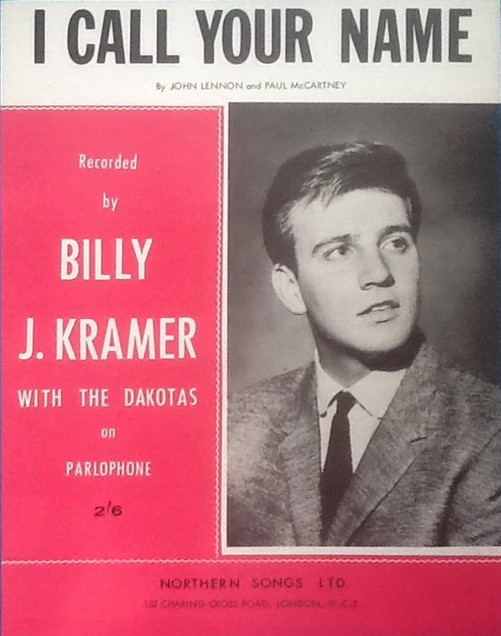 “I Call Your Name” has a structure similar to most of the Lennon / McCartney originals up to this point, which consists of a 'verse/ verse/ bridge/ verse' structure (or aaba), but with a few unique features. It may appear on the surface that the first two verses constitute one verse altogether, but upon closer inspection they are similar enough in chord structure and melody line to be viewed separately, which consistently fits it into the usual aaba mold. “I Call Your Name” has a structure similar to most of the Lennon / McCartney originals up to this point, which consists of a 'verse/ verse/ bridge/ verse' structure (or aaba), but with a few unique features. It may appear on the surface that the first two verses constitute one verse altogether, but upon closer inspection they are similar enough in chord structure and melody line to be viewed separately, which consistently fits it into the usual aaba mold.
We begin with a four measure intro complete with a guitar phrase that's pretty much identical to Billy J. Kramer’s rendition from the previous year, this introduction following a chord pattern similar to the last four measures of the second and fourth verses, as we’ll see later. This creates a nice segue into the first verse.
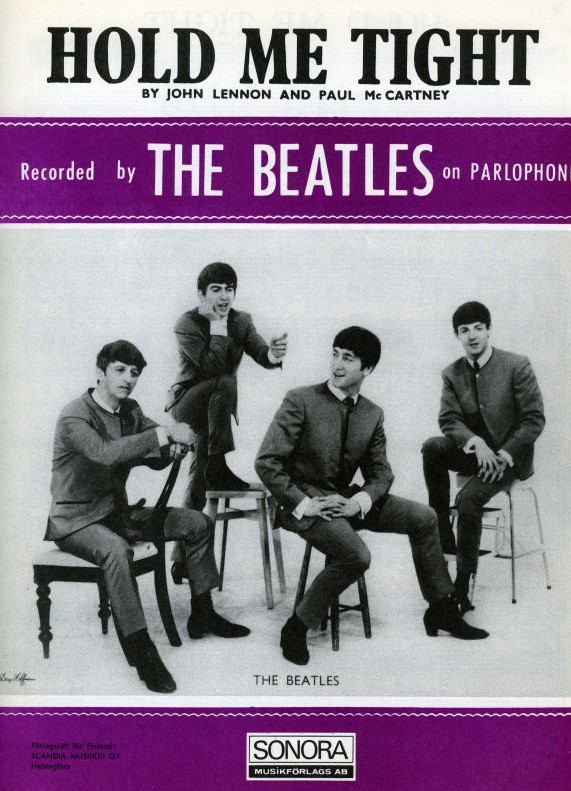 The first verse is eight measures long containing chord changes every two measures and featuring four short lyrical phrases, one for every chord change. The second verse starts immediately afterward as if it is connected, and follows a similar structure except for the last four measures which change chords every measure and end in the home key, which differentiates this verse from the first verse. The first verse is eight measures long containing chord changes every two measures and featuring four short lyrical phrases, one for every chord change. The second verse starts immediately afterward as if it is connected, and follows a similar structure except for the last four measures which change chords every measure and end in the home key, which differentiates this verse from the first verse.
The eight measure bridge also features the four short lyrical phrases, but the lead guitar plays a double-time pattern similar to the one heard throughout the song “Hold Me Tight.” After this we hear the third verse which is identical in structure to the second except for different lyrics.
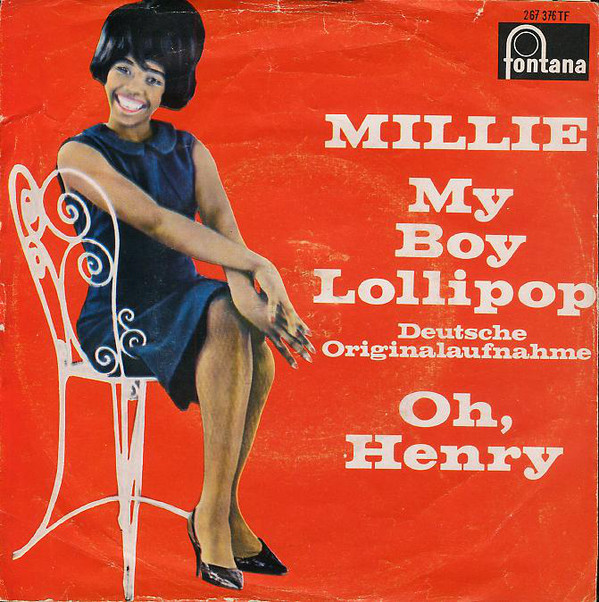 Then we go for a left turn. An eight measure instrumental section appears next, which takes us away from the slow ‘beat style’ rhythm to a style which was becoming popular in Britain in the early sixties dubbed “blue beat.” This term was then coined to describe early Jamaican music, or “ska,” which was released on the label Blue Beat Records in the UK. This syncopated rhythm focusing on off-beats, which found its way to American shores shortly afterward with songs like “My Boy Lollipop” by Millie Small, was quite new to US ears. Then we go for a left turn. An eight measure instrumental section appears next, which takes us away from the slow ‘beat style’ rhythm to a style which was becoming popular in Britain in the early sixties dubbed “blue beat.” This term was then coined to describe early Jamaican music, or “ska,” which was released on the label Blue Beat Records in the UK. This syncopated rhythm focusing on off-beats, which found its way to American shores shortly afterward with songs like “My Boy Lollipop” by Millie Small, was quite new to US ears.
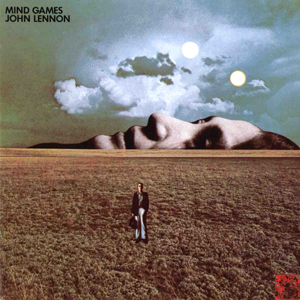 Lennon actually tried to utilize this musical style much later in his career during the bridge section of his 1973 hit “Mind Games,” although he found that American studio musicians still hadn’t mastered the "ska" or "reggae" genre's feel yet. “I should have invested in reggae because I never thought the Americans would get on,” Lennon explained. “The Beatles made an attempt at ‘ska,’ the middle, the solo on ‘I Call Your Name’ was ‘ska’ - deliberate and conscious.” Lennon actually tried to utilize this musical style much later in his career during the bridge section of his 1973 hit “Mind Games,” although he found that American studio musicians still hadn’t mastered the "ska" or "reggae" genre's feel yet. “I should have invested in reggae because I never thought the Americans would get on,” Lennon explained. “The Beatles made an attempt at ‘ska,’ the middle, the solo on ‘I Call Your Name’ was ‘ska’ - deliberate and conscious.”
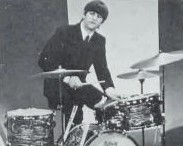 The Beatles attempt at “blue beat” (or “ska”) in this song was a bit clumsy but adventurous. Paul switched to a walking bass line, Ringo emphasized a swing style drum beat, and Harrison played a syncopated version of the guitar solo heard in Billy J. Kramer’s version of the song. The Beatles attempt at “blue beat” (or “ska”) in this song was a bit clumsy but adventurous. Paul switched to a walking bass line, Ringo emphasized a swing style drum beat, and Harrison played a syncopated version of the guitar solo heard in Billy J. Kramer’s version of the song.
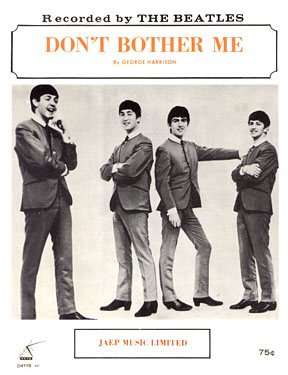 They switch back then to a straight 4/4 ‘beat style’ rhythm with a reprise of the bridge and final verse, which ends the song rather identically to George’s “Don’t Bother Me.” The title of the song is heard repeatedly as the recording fades with two chords alternating, the second chord always coming in on the syncopated “four-and,” which is the only time this is heard during the song. They switch back then to a straight 4/4 ‘beat style’ rhythm with a reprise of the bridge and final verse, which ends the song rather identically to George’s “Don’t Bother Me.” The title of the song is heard repeatedly as the recording fades with two chords alternating, the second chord always coming in on the syncopated “four-and,” which is the only time this is heard during the song.
John’s double-tracked vocal is the only voice heard in the entire song, which is sung rather dogmatically in comparison with Billy J. Kramer’s submissive delivery. Because of the pairing of painful lyrics with a joyous major key, the forceful vocal delivery tends to diminish the intended seriousness of the song. For instance, the jubilant final phrase of the melody line in the second verse denotes a positive tone, but the actual words are proclaiming “I can’t go on.” Adding this with his excited yelp before the guitar solo and the falsetto “ooh” at the end of the song, we get the impression that he’s not quite as hurt by the situation he’s singing about after all.
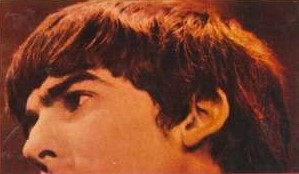 George Harrison attempts to be creative but, possibly because of his not being that familiar with this song, comes across somewhat ham-fisted throughout. He flubs his double-time guitar runs in the bridge a few times, which seemingly came to him with ease on “Hold Me Tight” the year before. Given more time to perfect, and in not so much of a hurry to get to the filming of their movie the next day, he no doubt would have been able to nail it in another few takes. George Harrison attempts to be creative but, possibly because of his not being that familiar with this song, comes across somewhat ham-fisted throughout. He flubs his double-time guitar runs in the bridge a few times, which seemingly came to him with ease on “Hold Me Tight” the year before. Given more time to perfect, and in not so much of a hurry to get to the filming of their movie the next day, he no doubt would have been able to nail it in another few takes.
 Paul McCartney plays somewhat rudimentarily throughout except for the walking bass lines he performs in the instrumental section and the octave jumps as the song fades out. Ringo doesn’t stray too much from his beat-style pattern throughout except for the “ska” instrumental section and the syncopated accents he performs in the final seconds of the song. Paul McCartney plays somewhat rudimentarily throughout except for the walking bass lines he performs in the instrumental section and the octave jumps as the song fades out. Ringo doesn’t stray too much from his beat-style pattern throughout except for the “ska” instrumental section and the syncopated accents he performs in the final seconds of the song.
The musicianship in this song is not where the actual charm lies, but in the song itself. Lyrically we follow the story of heartbreak and desperation, presumably the loss of a significant other. But, because of our widespread knowledge of Lennon’s personal life, one can speculate that the pain is actually from another source. As indicated above, even McCartney wonders if the loss depicted in this song concerned John’s childhood without his father or possibly the loss of his mother Julia.
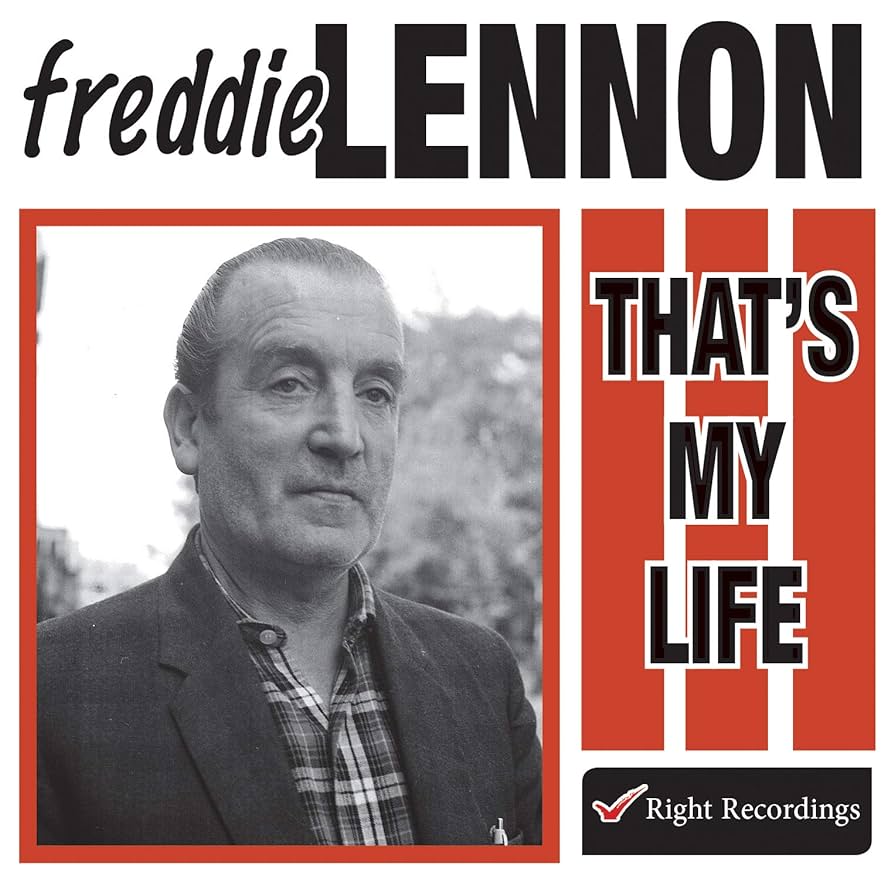 One possibility that we should be able to totally rule out is his mother’s death on July 15, 1958, which was more than a year after the estimated time the bulk of the song was written. The lyrics could well have been inspired by John growing up most of his life without his father Alfred “Freddie” Lennon. In fact, the line “was I to blame for being unfair” could possibly be depicting how as a child John was asked to choose which parent he wanted to live with, his choice being his mother. One possibility that we should be able to totally rule out is his mother’s death on July 15, 1958, which was more than a year after the estimated time the bulk of the song was written. The lyrics could well have been inspired by John growing up most of his life without his father Alfred “Freddie” Lennon. In fact, the line “was I to blame for being unfair” could possibly be depicting how as a child John was asked to choose which parent he wanted to live with, his choice being his mother.
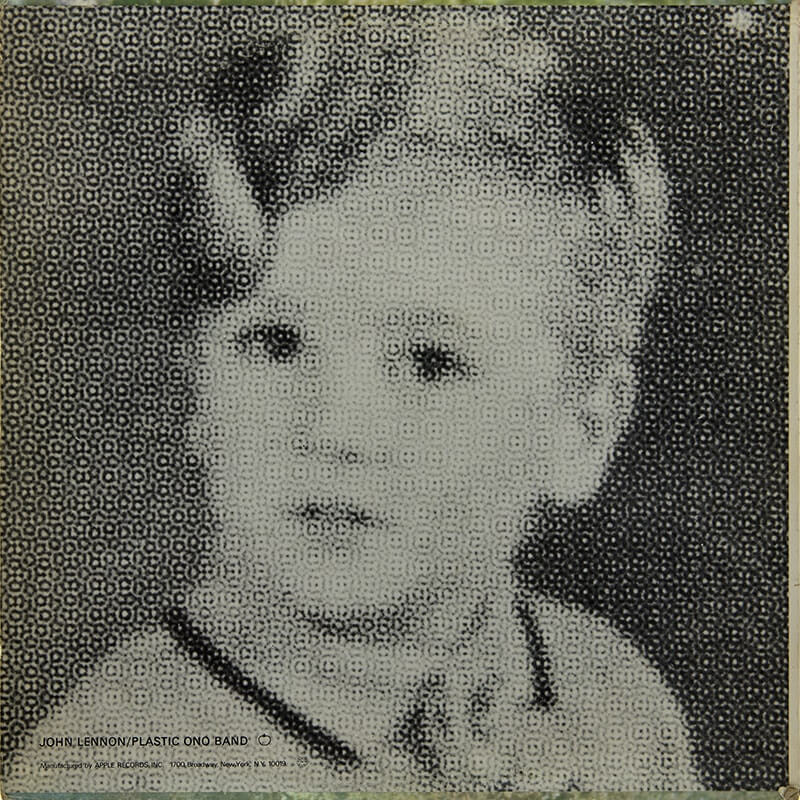 Another indication in favor of this speculation is the lyrical phrase “I never weep at night” that is vehemently repeated three times in the recording although it appears to be a meaningless thought if the song concerns a lost romantic love. Visions of young John growing more and more detached from the memory of his father would make this line make a little more sense. Nonetheless, since even the song’s co-composer didn't know the true answer, we surely will never know either. Another indication in favor of this speculation is the lyrical phrase “I never weep at night” that is vehemently repeated three times in the recording although it appears to be a meaningless thought if the song concerns a lost romantic love. Visions of young John growing more and more detached from the memory of his father would make this line make a little more sense. Nonetheless, since even the song’s co-composer didn't know the true answer, we surely will never know either.
American Releases
The main release of "I Call Your Name" was on the April 10th, 1964 Capitol album “The Beatles’ Second Album,” which featured the March 4th mono mix on the mono copies and the March 10th, 1964 stereo mix on the stereo copies. On January 21st, 2014, this album was released as an individual compact disc for the first time, the mono and stereo mixes being contained on a single CD.
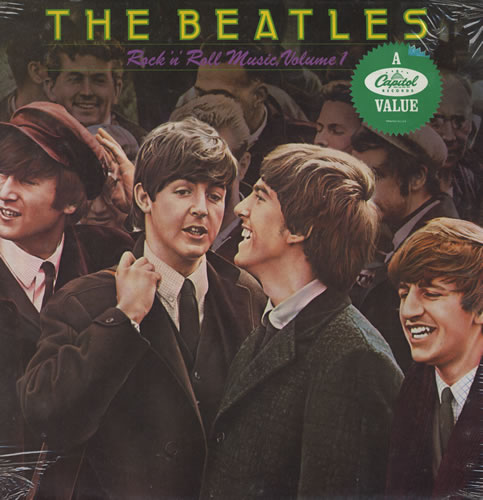 June 7th, 1976 saw the second release of the song on the Capitol compilation album “Rock ‘n’ Roll Music.” The unique June 22nd, 1964 stereo mix of "I Call Your Name" detailed above is included here. On October 27th, 1980, albums one and two of this collection were divided and released in two volumes, “Rock ‘n’ Roll Music, Volume 1” containing the same stereo mix of "I Call Your Name." June 7th, 1976 saw the second release of the song on the Capitol compilation album “Rock ‘n’ Roll Music.” The unique June 22nd, 1964 stereo mix of "I Call Your Name" detailed above is included here. On October 27th, 1980, albums one and two of this collection were divided and released in two volumes, “Rock ‘n’ Roll Music, Volume 1” containing the same stereo mix of "I Call Your Name."
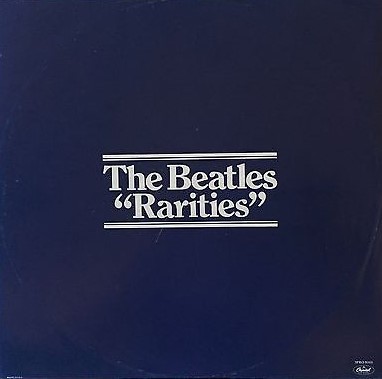 Because of EMI's decision to release a box set that included all of the British Beatles albums as well as an additional album entitled "Rarities" that included songs that did not appear on any British Beatles album, Capitol had initially decided to release this album in America. 2,000 promotional copies of this album were manufactured (#SPRO-8969) and then another unlimited number of advance copies (ESN-SN-12009) were printed in the fall of 1979. "I Call Your Name" was included on this proposed album, which was decided to be abondoned due to the fact that this and most of the songs contained therein were available on other Beatles albums in the US at the time. These promotional albums are very collectible today. Because of EMI's decision to release a box set that included all of the British Beatles albums as well as an additional album entitled "Rarities" that included songs that did not appear on any British Beatles album, Capitol had initially decided to release this album in America. 2,000 promotional copies of this album were manufactured (#SPRO-8969) and then another unlimited number of advance copies (ESN-SN-12009) were printed in the fall of 1979. "I Call Your Name" was included on this proposed album, which was decided to be abondoned due to the fact that this and most of the songs contained therein were available on other Beatles albums in the US at the time. These promotional albums are very collectible today.
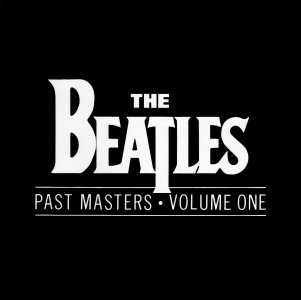 March 7th, 1988 saw the next release of the song on the compilation CD “Past Masters, Volume One,” which also contained the later June 22nd, 1964 stereo mix. Both volumes of "Past Masters" were then combined into one double-album for a vinyl release on October 24th, 1988 and then as a remastered CD set on September 9th, 2009 and on vinyl on November 12th, 2012. March 7th, 1988 saw the next release of the song on the compilation CD “Past Masters, Volume One,” which also contained the later June 22nd, 1964 stereo mix. Both volumes of "Past Masters" were then combined into one double-album for a vinyl release on October 24th, 1988 and then as a remastered CD set on September 9th, 2009 and on vinyl on November 12th, 2012.
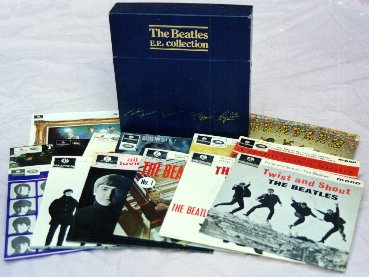 On June 30th, 1992, Capitol released a CD box set entitled “Compact Disc EP Collection” which contained all of the British EPs in mono. This was the first time that the June 4th, 1964 mono mix of “I Call Your Name,” as originally heard in Britain, was released in the US. On June 30th, 1992, Capitol released a CD box set entitled “Compact Disc EP Collection” which contained all of the British EPs in mono. This was the first time that the June 4th, 1964 mono mix of “I Call Your Name,” as originally heard in Britain, was released in the US.
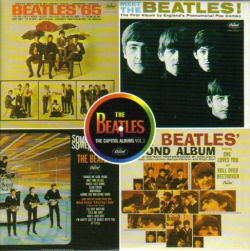 On November 16th, 2004, a box set entitled “The Capitol Albums, Vol. 1” was released, which featured both the early mono and stereo mixes of “I Call Your Name” as originally released in America on “The Beatles’ Second Album.” A promotional CD Sampler of this box set was distributed to radio stations that also included these same stereo and mono mixes of the song. On November 16th, 2004, a box set entitled “The Capitol Albums, Vol. 1” was released, which featured both the early mono and stereo mixes of “I Call Your Name” as originally released in America on “The Beatles’ Second Album.” A promotional CD Sampler of this box set was distributed to radio stations that also included these same stereo and mono mixes of the song.
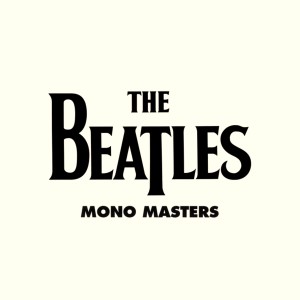 On September 9th, 2009, the June 4th, 1964 mono mix of the song, as originally featured on the British “Long Tall Sally” EP, appeared in the CD box set “The Beatles In Mono” on a disc called “Mono Masters.” This being the case, all four 1964 mixes of “I Call Your Name” then became readily available in America on compact disc. The vinyl edition of this box set was first released on September 9th, 2014. On September 9th, 2009, the June 4th, 1964 mono mix of the song, as originally featured on the British “Long Tall Sally” EP, appeared in the CD box set “The Beatles In Mono” on a disc called “Mono Masters.” This being the case, all four 1964 mixes of “I Call Your Name” then became readily available in America on compact disc. The vinyl edition of this box set was first released on September 9th, 2014.
Live Performances
It seems that The Beatles never performed “I Call Your Name” outside of EMI Studios other than for one performance for BBC radio as detailed above.
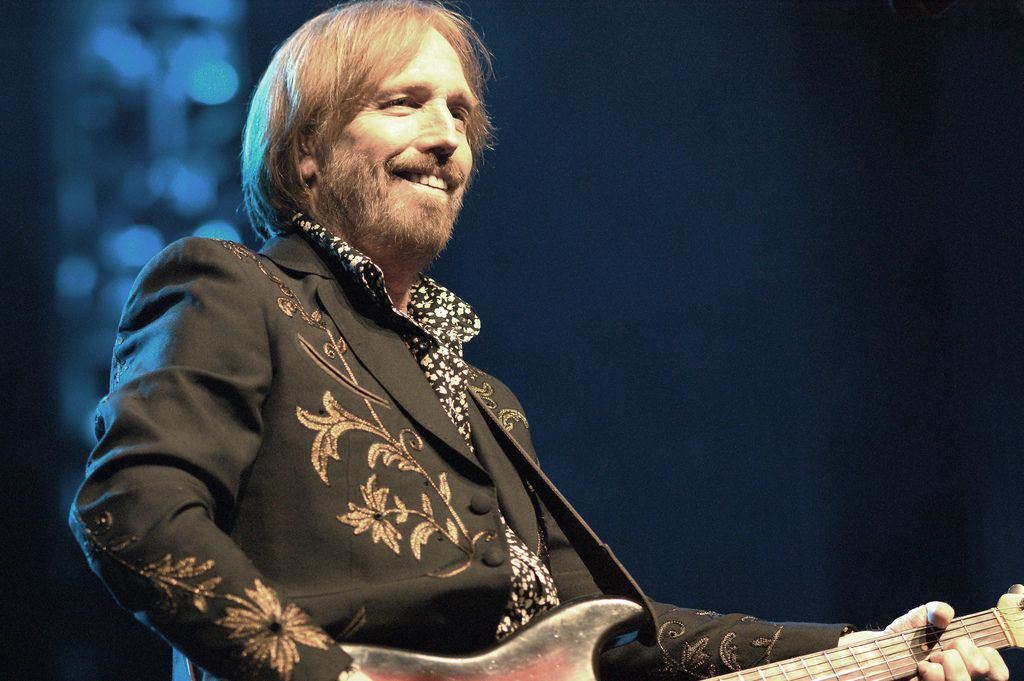 Surprisingly Ringo recorded and filmed a performance of "I Call Your Name" in March of 1990 as a contribution for "The John Lennon Scholarship Concert" held at the Pier Head in Liverpool on May 5th, 1990. The film was also featured at Yoko Ono's "Tribute To John Lennon" Liverpool concert on May 8th, 1990, this being broadcast on British television and later released in various forms on video. Since the Travelling Wilburys were popular at the time, the band that is featured in the filmed video with Ringo includes Jeff Lynne on rhythm guitar and Tom Petty on bass, as well as Joe Walsh on lead guitar and Jim Keltner on wood block. Surprisingly Ringo recorded and filmed a performance of "I Call Your Name" in March of 1990 as a contribution for "The John Lennon Scholarship Concert" held at the Pier Head in Liverpool on May 5th, 1990. The film was also featured at Yoko Ono's "Tribute To John Lennon" Liverpool concert on May 8th, 1990, this being broadcast on British television and later released in various forms on video. Since the Travelling Wilburys were popular at the time, the band that is featured in the filmed video with Ringo includes Jeff Lynne on rhythm guitar and Tom Petty on bass, as well as Joe Walsh on lead guitar and Jim Keltner on wood block.
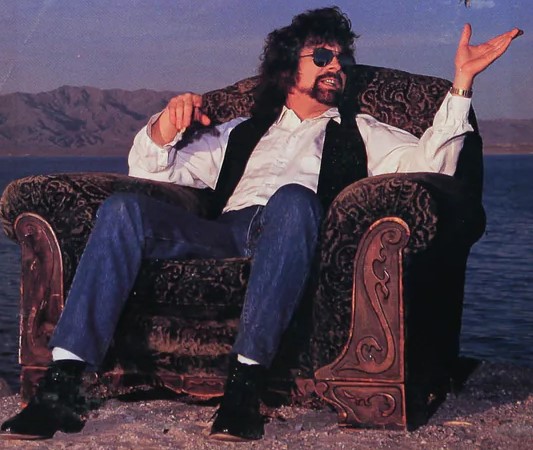 While this new version has the obvious Jeff Lynne production trademark as well as a finely performed double-tracked vocal from Ringo, the actual cast of musicians featured on this recording have not been confirmed and may not have been those seen in the promo film. The audio of this rare 1990 recording of "I Call Your Name" has not yet been officially released commercially, except for bootleg releases. While this new version has the obvious Jeff Lynne production trademark as well as a finely performed double-tracked vocal from Ringo, the actual cast of musicians featured on this recording have not been confirmed and may not have been those seen in the promo film. The audio of this rare 1990 recording of "I Call Your Name" has not yet been officially released commercially, except for bootleg releases.
Conclusion
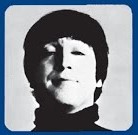 The songwriting talent of John Lennon can truly be said to have dazzled the world. There are many examples of this talent in his immense catalog, ranging from the beauty and inspirational quality of “Strawberry Fields Forever” and “Imagine” to the paean-like “All You Need Is Love” and “Give Peace A Chance,” all of these becoming anthems of our generation. The songwriting talent of John Lennon can truly be said to have dazzled the world. There are many examples of this talent in his immense catalog, ranging from the beauty and inspirational quality of “Strawberry Fields Forever” and “Imagine” to the paean-like “All You Need Is Love” and “Give Peace A Chance,” all of these becoming anthems of our generation.
 Since the passing of time has done nothing but accentuate the giftedness of Lennon’s abilities, it is only natural for some to inquire of his humble beginnings as a songwriter. “I Call Your Name” answers these inquiries since, along with "One After 909," this is the earliest example of the songwriting of John Lennon. This painful and (possibly) personal account, which predates the anguish of “I’m A Loser” and “Help!” by seven or eight years, shows John Lennon quite comfortable in exposing his personal feelings effectively in song. Since the passing of time has done nothing but accentuate the giftedness of Lennon’s abilities, it is only natural for some to inquire of his humble beginnings as a songwriter. “I Call Your Name” answers these inquiries since, along with "One After 909," this is the earliest example of the songwriting of John Lennon. This painful and (possibly) personal account, which predates the anguish of “I’m A Loser” and “Help!” by seven or eight years, shows John Lennon quite comfortable in exposing his personal feelings effectively in song.
Song Summary
"I Call Your Name”
Written by: John Lennon / Paul McCartney
- Song Written: March 1957 (approx.)
- Song Recorded: March 1, 1964
- First US Release Date: April 10, 1964
- First US Album Release: Capitol #ST 2080 “The Beatles’ Second Album”
- US Single Release: n/a
- Highest Chart Position: n/a
- British Album Release: Parlophone # PCSP 719 “Rock ‘n’ Roll Music”
- Length: 2:09
- Key: E major
- Producer: George Martin
- Engineers: Norman Smith, Richard Langham
Instrumentation (most likely):
-
John Lennon - Lead Vocals, Rhythm Guitar (1964 Rickenbacker 325)
-
George Harrison – Lead Guitar (1963 Rickenbacker 360-12 Fire-glo)
-
Paul McCartney - Bass Guitar (1963 Hofner 500/1)
-
Ringo Starr – Drums (1963 Ludwig Downbeat Black Oyster Pearl), Cowbell
Written and compiled by Dave Rybaczewski
|
IF YOU WOULD LIKE TO MAKE A DONATION TO KEEP THIS WEBSITE UP AND RUNNING, PLEASE CLICK BELOW!
Sign Up Below for our MONTHLY BEATLES TRIVIA QUIZ!
|